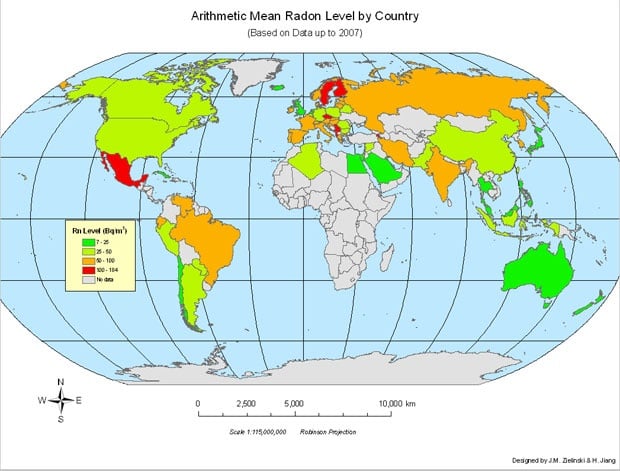View the video clip below to locate our even more concerning how radon can impact you. When someone takes in radon gas, it goes into their lungs, revealing them to small amounts of radiation.

As the radon relocates from the water to air, it can be inhaled. Water that comes from deep, underground wells in rock might have greater degrees of radon, whereas surface water normally has really reduced radon degrees. For the most part, water does not add much to overall exposure to radon. The radon focus you have actually measured in your home are, in family member terms as well as also prior to reduction, not very high. According to the National Council of Radiation Protection and Measurements, the typical interior radon concentration in US houses is about 46.3 Bq m-3.
It is likewise possible for radon to enter your house with your water, though this postures a much lower danger than when it comes through the dirt. If you have a personal well, you can have it evaluated for radon. If the levels are high, you can have the water supply treated so that the radon is gotten rid of before it enters your house. If you are concerned about radon and also your water originates from a public water supply, you must call your supplier. In addition to the information collected on temporary screening packages, Goodarzi's team was also able to get a better understanding of just how the dimension, design and also age of residence belong to radon gas exposure.
Three Points You Required To Understand About Radon In Winter
But it's difficult to straight establish a link in between reduced degrees of radon as well as cancer cells. There are just way too many other possible carcinogens, like air pollution, pre-owned smoke, as well as also random DNA anomalies. Radon is an invisible, odor-free contaminated gas that leaks out of the dirt and into the ambience. As a matter of fact, you're probably taking in little traces of it right now. Yet when it's caught inside a home and reaches high degrees, radon can cause lung cancer cells.

- Meaning, act to reduce radon degrees that are more than 4 picocuries per litre.
- Pass/fail should not be used to identify radon safety.
- The United States EPA has actually developed the radon degree of 4.0 picocuries per liter to be the activity level for radon gas in houses.
- The words radon test "failed" or radon test "passed" are thrown around out there.
Should I worry about radon gas?
Seal and caulk all cracks in your foundation and walls. Not only will this help prevent entry of radon, but it'll add to the energy efficiency of your home. Run a three to four-inch gas-tight pipe from the first layer or crawlspace to the roof. This will safely vent gases from the soil to the outside.
When he kindly talented me one out of his collection the various other night, he diligently showed me how to close the choke, prime the light bulb, as well as fire up the engine. He revealed me exactly how to involve the auger, and also reduced a perfectly straight line down the driveway. As I loaded it in my truck and was about to retreat, he reminded me not to forget just how to mix the oil and gas for both stroke engine. However if there's no threshold below which radon does not raise cancer threat, how did the EPA choose 4 picocuries per liter of interior air as its advisable exposure limit?
How Tough Is It To Market A Residence With High Radon Levels?
How much is a radon gas test?
Radon Test Cost
A radon inspection ranges between $146 and $747, averaging at $446. Home test kits range between $10 and $30. However, hiring a pro is the most accurate method of testing. Costs to mitigate average $1,000 and are separate from testing.
The program supplies a round figure settlement to people with lung cancer and chosen non-cancerous lung conditions, if specific requirements are satisfied. Information about the Article source program is offered at/ civil/common/reca. html or by calling (RECP). Direct exposure to the combination of radon gas as well as cigarette smoke creates a better risk for lung cancer cells than either factor alone. However, radon is additionally thought to trigger a substantial number of lung cancer deaths among non-smokers in the USA every year. Percentages of radon can also be released from the water system into the air.